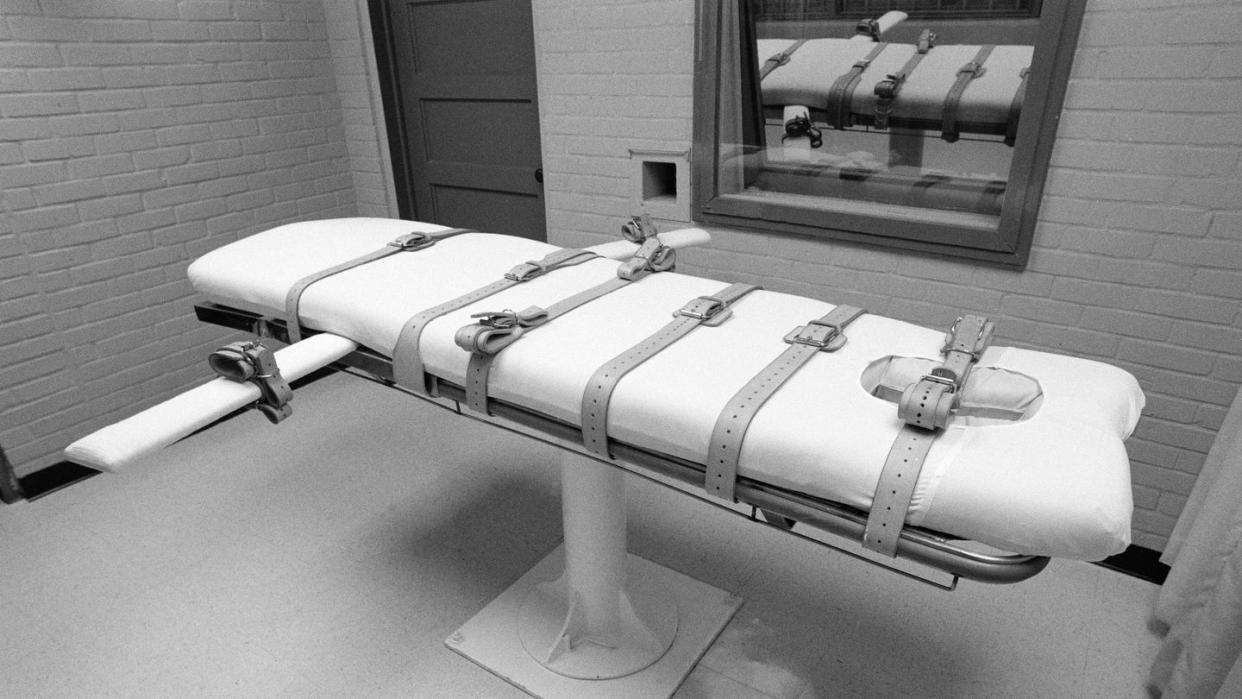This Man Survived One Execution. Now, Alabama Will Try to Kill Him Again—With Nitrogen Gas.

Kenneth Smith is slated for execution in Alabama via nitrogen hypoxia.
It will become the first use of nitrogen for execution anywhere in the U.S.
Experts from the United Nations say the plan will result in a “painful and humiliating death.”
Kenneth Smith has already been just moments away from his own execution, with a lethal injection drug concoction in the hands of personnel searching for a vein. That execution attempt in November of 2022 was called off after failed attempts to suitably insert the needle, sending Smith back to Alabama’s death row and leading the state to turn to a new strategy: nitrogen hypoxia.
Smith was convicted of a 1988 murder-for-hire plot in which he worked with partner John Forrest Parker to stab Elizabeth Sennett to death. Sennett’s husband, Charles Sennett, hired a man named Billy Gray Williams to kill Elizabeth, and Williams in turn paid Smith and Parker $1,000 each for the killing. Smith is the only person connected to the event still alive—Elizabeth died from her injuries at the hospital, Charles killed himself a week after his wife’s death, Parker was executed by lethal injection in 2010 for his role in the crime, and Williams died in prison in 2020.
The inability to find a suitable vein for Smith in 2022 has led Alabama to turn to nitrogen, a method added to the state’s execution procedures in 2018 due to a nationwide shortage of lethal injection drugs. Alabama joins Oklahoma and Mississippi as one of only three states that consider nitrogen hypoxia a possible execution method. But it’s never been employed.
That may all change on January 25, the date of Smith’s second execution attempt.
Not everyone thinks nitrogen is the best idea. “We are concerned that nitrogen hypoxia would result in a painful and humiliating death,” a group of experts from the United Nations write in a statement. Part of the U.N. Human Rights Council’s special procedures program, the group—Morris Tidball-Binz, Alice Jill Edwards, Tlaeng Mofokeng, and Margaret Satterthwaite—say that moving forward with nitrogen hypoxia likely violates the prohibition on torture due to the potential for suffering.
However, Article 1 of the U.N.’s Convention against Torture and Other Cruel, Inhuman or Degrading Treatment or Punishment states that the organization’s definition of torture “does not include pain or suffering arising only from, inherent in or incidental to lawful sanctions.” A Doctors Without Borders website also clarifies that the death penalty is, in general, “not forbidden under international law if the criminal laws of a State provide for it as a form of punishment for the most serious crimes.”
The U.N. experts nevertheless call the nitrogen method untested and potentially cruel, and claim that there is no scientific evidence to prove otherwise.
The execution plan involves Smith breathing pure nitrogen via a mask. This highly toxic concentration of the gas will then result in his asphyxiation.
That gas is toxic not just to Smith, but to everyone in the room with him during the execution. And that could present problems. According to a slate of procedures for administering an execution via nitrogen hypoxia released in 2023, Alabama acknowledges the health risks of nitrogen to those participating in the execution. According to the document, “if nitrogen hypoxia is the method of execution, no spiritual advisor or alternate spiritual advisor shall be allowed into the execution chamber unless they review and sign the spiritual advisor nitrogen hypoxia acknowledgement form.”
Smith told NPR that he is still traumatized from his last execution attempt and is anxious about the next one. “Everybody is telling me that I’m going to suffer,” he said. “Well, I’m absolutely terrified.”
Efforts by Smith’s lawyers to stay the second execution attempt failed at the Alabama Supreme Court. As such, the January 25 date currently stands for nitrogen’s first use as an official execution method.
You Might Also Like

